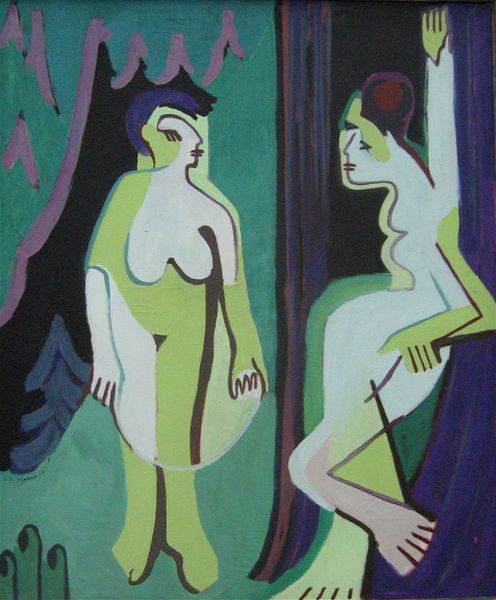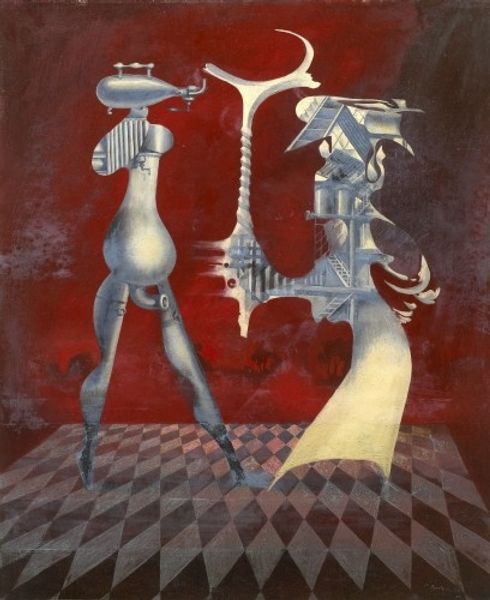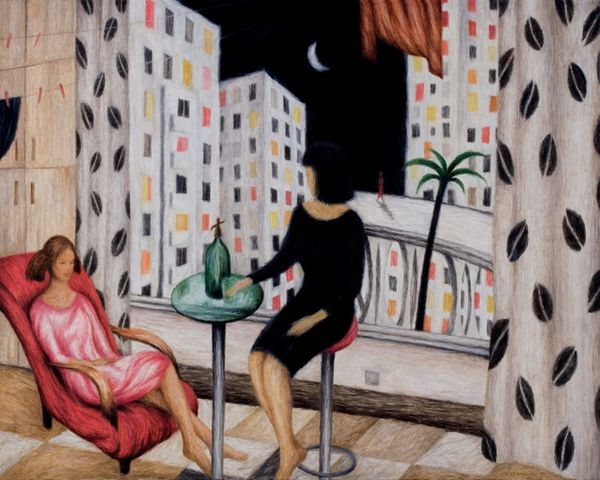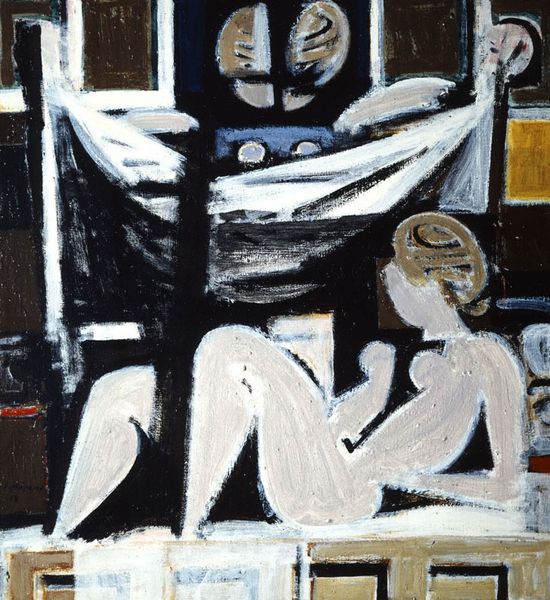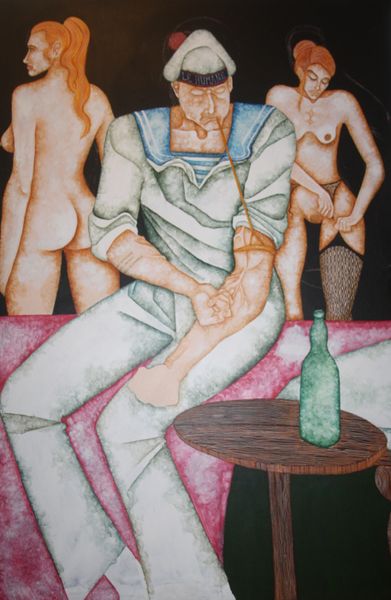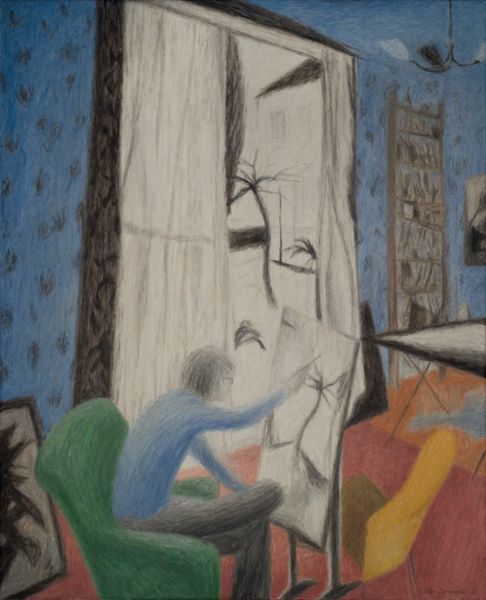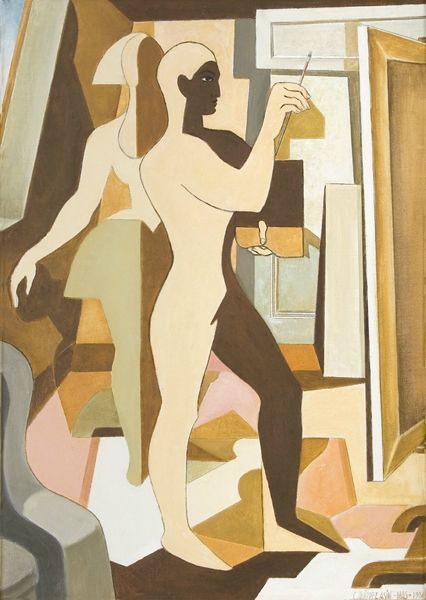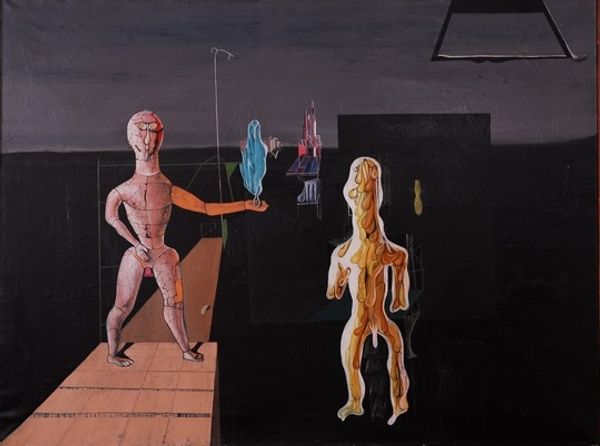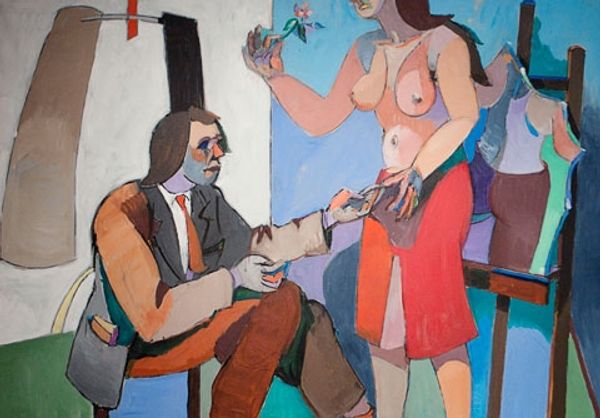
tempera, painting, oil-paint
#
portrait
#
art-deco
#
cubism
#
tempera
#
painting
#
oil-paint
#
figuration
#
geometric
#
genre-painting
#
modernism
Copyright: Public domain US
Sandor Bortnyik made this painting titled Cabaret in Hungary, but the specific date is unknown. The painting brings together an assortment of colorful figures against a geometrically-defined stage, and the image evokes the theatrical world of Weimar-era Berlin, where Bortnyik lived for a time. The artist employs flattened planes and simplified forms, visual codes that align with the Constructivist and Bauhaus movements. The geometric organization of space creates a sense of modernity and progress, yet the cabaret setting hints at the underlying social tensions and moral ambiguities of post-World War I Europe. Bortnyik, a committed communist, actively critiqued the social structures of his time. The historian’s role is to reveal these associations, drawing on period sources, such as newspapers, manifestos, and exhibition catalogs, to reconstruct the world in which the artist lived and worked. Art’s meaning is contingent on its social and institutional context, requiring continuous re-evaluation.
Comments
No comments
Be the first to comment and join the conversation on the ultimate creative platform.
